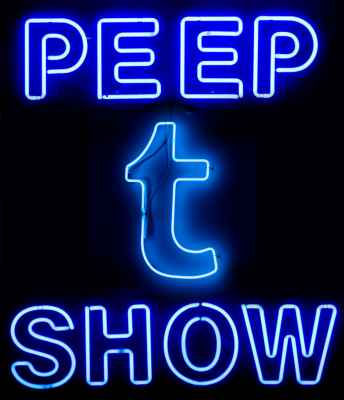When I started this series three weeks ago, my goal was to provide a review/recap of Orphan Black’s final season, tying it to issues of the body, history and philosophy of science, and the value of fiction. Turns out that last element drew me in and I was most curious about the way that Orphan Black’s creators, Graeme Manson and John Fawcett, employed their science consultant, Cosima Herter, in order to make the science in the show as “real” as possible, while still developing and producing a piece of work that was very clearly fiction. Along the way, I’ve found myself wanting to bring in other works of narrative-based fiction. I wrote about Mr. Robot, but I have drafts that include Minority Report, Black Mirror, Nathaniel Rich’s 2013 novel, Odds Against Tomorrow, Margaret Atwood’s Oryx & Crake, The Blair Witch Project, and Orson Welles’s 1938 War of the Worlds radio broadcast. Reflecting back on those drafts, I came just short of plotting these works along a matrix consisting of two axes: plausibility and believability. That is, could this not only actually happen, but would a public believe it had? In effect, I began to work out how hyperstitious to consider each of these culture artifacts. more...
Findings from a recent study out of Stanford University Business School by Yilun Wang and Michal Kosinski indicate that AI can correctly identify sexual preference based on images of a person’s face. The study used 35,000 images from a popular U.S. dating site to test the accuracy of algorithms in determining self-identified sexual orientation. Their sample images include cis-white people who identify as either heterosexual or homosexual. The researchers’ algorithm correctly assessed the sexual identity of men 81% of the time and women 74%. When the software had access to multiple images of each face, accuracy increased to 91% for images of men and 84% for images of women. In contrast, humans correctly discerned men’s sexual identity 61% of the time and for women, only 54%.
The authors of the study note that algorithmic detection was based on “gender atypical” expressions and “grooming” practices along with fixed facial features, such as forehead size and nose length. Homosexual-identified men appeared more feminized than their heterosexual counterparts, while lesbian women appeared more masculine. Wang and Kosinski argue that their findings show “strong support” for prenatal hormone exposure which predisposes people to same-sex attraction and has clear markers in both physiology and behavior. According to the authors’ analysis and subsequent media coverage, people with same-sex attraction were “born that way” and the essential nature of sexuality was revealed through a sophisticated technological apparatus.
While the authors demonstrate an impressive show of programming, they employ bad science, faulty philosophy, and irresponsible politics. This is because the study and its surrounding commentary maintain two lines of essentialism, and both are wrong. more...
The High Court of Australia is currently hearing a case about whether or not Australia will move forward with a marriage equality plebiscite. The plebiscite is a non-binding survey in which Australians can indicate their position on same-sex marriage. The results of the plebiscite have no direct effect on the law, but will inform members of parliament who may or may not then proceed with legislation to extend marriage rights to non-heterosexual couples.
The marriage equality debates in Australia are mired in familiar political tensions—left-leaning liberals argue that marriage is a human right, critical progressives are wary about entrenching normative kinship structures, and conservatives oppose same-sex marriage because, what about the children?. The plebiscite is contentious in its own right, as a high price tag ($122million) and an open platform for “No” campaigners to espouse hate have been the subject of heated critique (and indeed, undergird the current court hearings). But the plebiscite is also marked by an additional controversy arising from a seemingly mundane component: the use of postal mail. more...
Last week, I introduced some characters to my argument: Orphan Black and its writing and consulting staff, Mr. Robot and its creators, the Cybernetic Culture Research Unit and Nick Land, accelerationism, and hyperstition. Need a refresher? Find it here. Now, I’d like to take a brief detour in order to introduce another important character here: speculative design. more...
At what point does a fictional tale of a present day technocapitalist advancement and the characters embroiled in its aftermath turn into a dystopia? Is there ever a clear threshold between the plausible and the absurd? And what responsibility does the artist or author have towards their audience to make clear the realism of the piece?
Spoiler Warning: you may want to tread lightly if you haven’t yet but still plan on watching through season 2 of Mr. Robot and season 5 of Orphan Black. more...

It is no secret that we live in an era of vast and unprecedented technological advancement. We are inundated in computers of all sorts, smart phones, drones (both commercial and military), juiceros, a growing and inescapable surveillance presence, robotic radiosurgery systems, the list goes on and on. Some of this technology is miraculous, some of it is frivolous, some of it is downright scary. At times, it seems as though the conditions of the world as we know it are less than half a step away from the teeming circuitboard studded eco-systems of Cyberpunk fiction. The comparison has been made before, in this excellent Washington Post editorial, for example.
The backdrop of my favorite Cyberpunk works are commercialized wastelands; the walls built and buttressed by corporate power, floorboards laid by cyber crime and corporate espionage, furnished with wires, neon and advertising. With every passing day our world more and more resembles this speculative and cautionary setting.
However, Cyberpunk is more than a warning to me… it’s a road map. Cyberpunk, in many ways, leads us through the boundaries and pitfalls that it seems to predict. That’s not to say that Cyberpunk is a monolith, by any means. However, by examining the common narrative strands shared by different Cyberpunk works, themes and trajectories become all the more apparent and applicable to our lived experience.
The catalyst to my writing this piece is the recent result of the Supreme Court Case: Impression Products, Inc. V. Lexmark International, Inc. The court case is fairly complicated- but here is the quick and dirty rundown: Lexmark sold two kinds of printer cartridges: refillable cartridges and single use cartridges. Impression Products, Inc was sued by Lexmark for adapting the single use cartridges into reusable cartridges (cutting down on waste and letting the consumer save some coin). The case made its way up to the Supreme Court and the court aired in favor of Impression over Lexmark.
Alright, so it’s ink, what’s the big deal? Well, Kyle Weins at Wired nails it on the head: “Why all the fuss? Because this wasn’t really about printer toner. It was about your ownership rights, and whether a patent holder can dictate how you repair, modify, or reuse something you’ve purchased.” Over the years, tech giants like Sony, Lexmark, HP, Microsoft, etc. have been pushing the idea that products purchased from them are, in fact, licensed and not owned by the consumer. Understandably, these licensing schemes are an attempt by these larger companies to consolidate and protect their intellectual property.
Apple and other large tech companies do everything they can to inhibit small time repair shops- in the name of intellectual property, of course. Apple went so far as to disable IPhones remotely if they were detected at a third party repair shop. I’m sure intellectual property was a factor in these policies but it’s convenient that companies like Apple simultaneously make a tidy profit on the micro monopolies they create by locking down the repair and expansion of the products that they sell to us.
These restrictions represent a kind of technological prescriptivism. From the perspective of large tech companies like Apple, we have to use manufactured items for their standardized manufactured purpose. Innovation has been consigned to the boardroom, the R&D lab or the Silicon Valley start up. We no longer literally “own” what we own. Copyright, intellectual property, and the very concept of economic exchange have become disgusting shams under these policies. Technological prescriptivism would rob us of our ability to tinker, to create, to experiment… we are to become naught but predictable and ever profitable consumers.
THIS is where we can learn from Cyberpunk. Those interested in Cyberpunk can quote William Gibson ad nauseum on this: “The Street finds its own uses for things – uses the manufacturers never imagined.” What Gibson is saying: characters in Cyberpunk overcome the assigned manufactured purpose of the things around them.
Cyberpunk fiction is filled with individuals owning what they own but simultaneously do not “own.” It’s filled with individuals who subvert prescribed use.
In the 1995 anime, Ghost in the Shell, Motoko Kusinagi’s body is literally not hers. Her state-of-the-art cybernetic body is government property. During a conversation with another member of her unit, Batou, Kusanagi says: “If we ever quit or retire, we’d have to give back our augmented brains and cyborg bodies. There wouldn’t be much left after that.” Throughout the plot of Ghost in the Shell (1995) Kusanagi’s search for answers forces her to push the limits of what her body is “allowed” to do. During the final scenes of the movie, Kusanagi literally tears her body apart through overexertion. Likewise, her search for truth eventually thrusts two Japanese governmental agencies into conflict with one another. Her own unit, Section 9 is pitted against Section 6. This conflict, indicative of a split in the otherwise autonomous interests of the Japanese government, reflects the collapsing authority that had once outlined the limits of Motoko Kusanagi’s ownership over her body. Cyborgs claiming their rightful bodily autonomy is not unique to Ghost in the Shell. Other examples are easily found in Ex-Machina and Blade Runner in which rebellious bots shed their chains and refuse subservience. In every case, these Cyborgs shift the terms of ownership to match the demands of their lived experience.
In the 1985 Terry Gilliam dystopian film, Brazil, there is a short scene wherein the protagonist, Sam, phones into the “Central Services” to get his heating and air conditioning fixed. He finds his requests dispassionately and politely declined. Amusingly, renegade repairman Archibald Tuttle intercepts the request and infiltrates Sam’s apartment in order to repair his air conditioning. This, of course, is a dangerous and highly illegal endeavor- “Central Services” eventually seizes Sam’s apartment because of the unauthorized repairs. Apple would be proud. In Brazil, Gilliam frames Tuttle, the third party repairman, as a literal subversive. To me, the third party repairmen who fix cracked IPhone screens are probably not that far off Gilliam’s Archibald Tuttle.
Finally, many Cyberpunk stories harbor a motif of necessary improvisation in the face of obsolescence. Two famous examples are Terminator 2 and Terminator 3. In both films, the T-800/T-850 (as portrayed by Arnold Schwarzenegger) is an outdated model of Android forced to hold his own against a technologically superior foe. The T-8XX and his allies must make due with what they have. John Connor, Sarah Connor, Kate Brewster and others have to be creative, they have to struggle, and they have to improvise. That improvisation is a crucial part of the Terminator movies, but it is an undeniable part of the Cyberpunk aesthetic generally speaking. In William Gibson’s Neuromancer, Ratz- the bartender has to make due with his outdated (described as antique) mechanical arm. In Deus Ex, Gunther Hermann and Anna Navarre- military cyborgs- find themselves at risk of being displaced by newer cyborgs. Hermann and Navarre are especially resentful because their extensive cyberization left them permanently disfigured- an ordeal the newer cyborgs don’t have to deal with. Despite their struggle against obsolescence, Hermann and Navarre prove themselves to be exceptional soldiers via tactical prowess and ruthlessness. The need for improvisation and struggle against obsolescence is something that’s been felt by anyone who has had to make due with an aging computer or wait for a contract renew before updating a dying mobile phone.
It is essential (or at least, helpful) to pay attention to the way characters in Cyberpunk fiction navigate the technological worlds in which they live. It is rare to see Cyberpunk characters depicted as luddites (although, it is not unheard of – In Deus Ex, the player can blow up the internet). Generally speaking, however, Cyberpunks turn their constraints back on themselves. In the finale of the surrealist cyberpunk horror film, Tetsuo: The Iron Man, when a man is faced with the loss of his humanity at the hands of a “Metal Fetishist,” this would-be victim subverts his transfiguration to corrupt the corruption he’s been forced to embrace.
Cyberpunks own what is theirs, even when it is not theirs. They repair and they tinker. They improvise and adapt. In Cyberpunk fiction, a spade is not a spade- a spade is whatever you can make it.
In our own world, we are quick to dismiss new technology. Many wish to escape the ubiquity of smartphones, social media, networks and surveillance. PsychologyToday even has a guide on how to escape and set boundaries. The impulse to toss it all aside makes sense- it’s clear that technology often isn’t presented to us as much as it is imposed. On this point, I turn to Hélène Cixous’ account of writing. In her 1975 article, Laugh of the Medusa, Cixous (philosopher, playwright and poet) highlights a certain anxiety the average person feels when they are called upon to write:
And why don’t you write? Write! Writing is for you, you are for you; your body is yours, take it. I know why you haven’t written. (And why I didn’t write before the age of twenty-seven.) Because writing is at once too high, too great for you, it’s reserved for the great-that is for “great men”; and it’s “silly.”
Technology is just the same- generally speaking, it is manufactured for an imaginary “average” everyday consumer. But as cyberpunk teaches us, we are not bound by the prescribed manufacture. As punk musician Amanda Palmer, would say- “we can fix our own shit”, too.
Winding down- I am reminded of my older sister who lives in New York City. In her spare time, she makes art from duct tape. She uses an exacto knife to cut out bits of different colored tape. From there, she arranges the bits into an reimagined sort of mosaic. The result is nothing less than stunning to me- Nikki is able to see past the standardized use of “duct tape” as material with a set use and function. Artists, like Cyberpunks, have an inert ability to see past the given. Artists and Cyberpunks alike innovate from the bottom up rather than the top down. Such a mindset is needed if we are to escape the strange pre-Cyberpunk dysphoria we currently find ourselves in.
Alex Palma is a member of the Philadelphia Historical Community; he’s worked in several archives and historical sites across the city. His interests include technology, videogames, film, genre literature, historiography, historic preservation and continental philosophy.

In a recent post that discussed why revenge porn victims feel such a strong sense of violation when images of their bodies are shared without consent, I argued that “the conversation about non-consensual pornography needs to be recentered from property rights, or even privacy, to the concept of ‘bodily integrity.'” In particular, I suggested it might be useful to reimagine our pics and profiles as “digital prostheses” that we incorporate into our sense of self. I concluded that “our pictures and profiles are not merely representations of us; rather, they are us, in some important sense.”
Reflecting on my personal history as a cam model, I want to talk about a related topic: How online sex workers experience loss of control over the images, videos, live streams, and profiles that we produce. A key question I want consider is how we ought to think about context and bodily integrity in a situations where we, as models, commodify our own bodies. Additionally, I want reflect on what role consent plays in such situations.
I did my first cam show in 2013. My graduate assistantship had ended, and I was looking for ways to pay rent while finished my comprehensive exams and tried to figure out if wanted to write a dissertation. I thought it might be a convenient part-time gig that I could fit in between school work and other small jobs I picked up. I was also just curious about it and whether I could make it work. more...

The lies told to artists mirror the lies told to women: Be good enough, be pretty enough, and that guy or gallery will sweep you off your feet… But make the first move, seize your destiny, and you’re a whore.
– Molly Crabapple, Drawing Blood
The question of how to handle adult content is difficult and unavoidable for any social media platform. Sites that host adult content usually find it very hard to get adult backlinks since not many sites are interested and some are even indifferent towards the adult industry. The complexity of the issue is such that companies’ responses are all over the map. Before talking about what companies lose out on when they ban adult content, it’s probably helpful to look at where the largest social media platforms stand on the issue. more...
While updating my personal archive of news relating to the Influencer industry, I decided to highlight a few significant developments in Q1-Q2 of 2017 in this short round-up.
With its historical beginnings rooted in bedroom camming culture in the North American late-1990s and the online selling culture in the South East Asian early-2000s, the Influencer industry is its vernacular and institutionalised formats is more than a decade old today.
Yet, for all their progress and advancements across several industry verticals and areas of society, present-day news reports seem to be stuck in a backdated timeloop as they continually express surprise at the fact that Influencers can command sizable earning and brands want to work with them, assert that the Influencer industry is somehow mysterious and a secret weapon, and reiterate that the Influencer industry is simultaneously on the rise and on the decline. That’s quite the obsession over the financial aspect of Influencers. But is there much else?
Yes! In the first half of 2017 alone, the Influencer ecology worldwide has registered several controversial blows and innovative debuts in relation to legality, economics, culture, and social issues. more...
Inverse has a short thing about the precipitous decline of reported close encounters with extra-terrestrials following the widespread adoption of smartphones. Author Ryan Britt asks, “How come there have been fewer reports of flying saucers and alien abductions in the age of the camera phone?” The answer is, essentially, UFOs and abduction stories don’t work at the high resolutions of our devices. Roswell and abductions are the products of eye witness accounts and fuzzy VHS video, not 4k videos captured on iPhones. The mundane enchantment of suburbia, as I’ve called it before, gets deleted as noise in an attempt to capture life in the photo-realistic. more...







